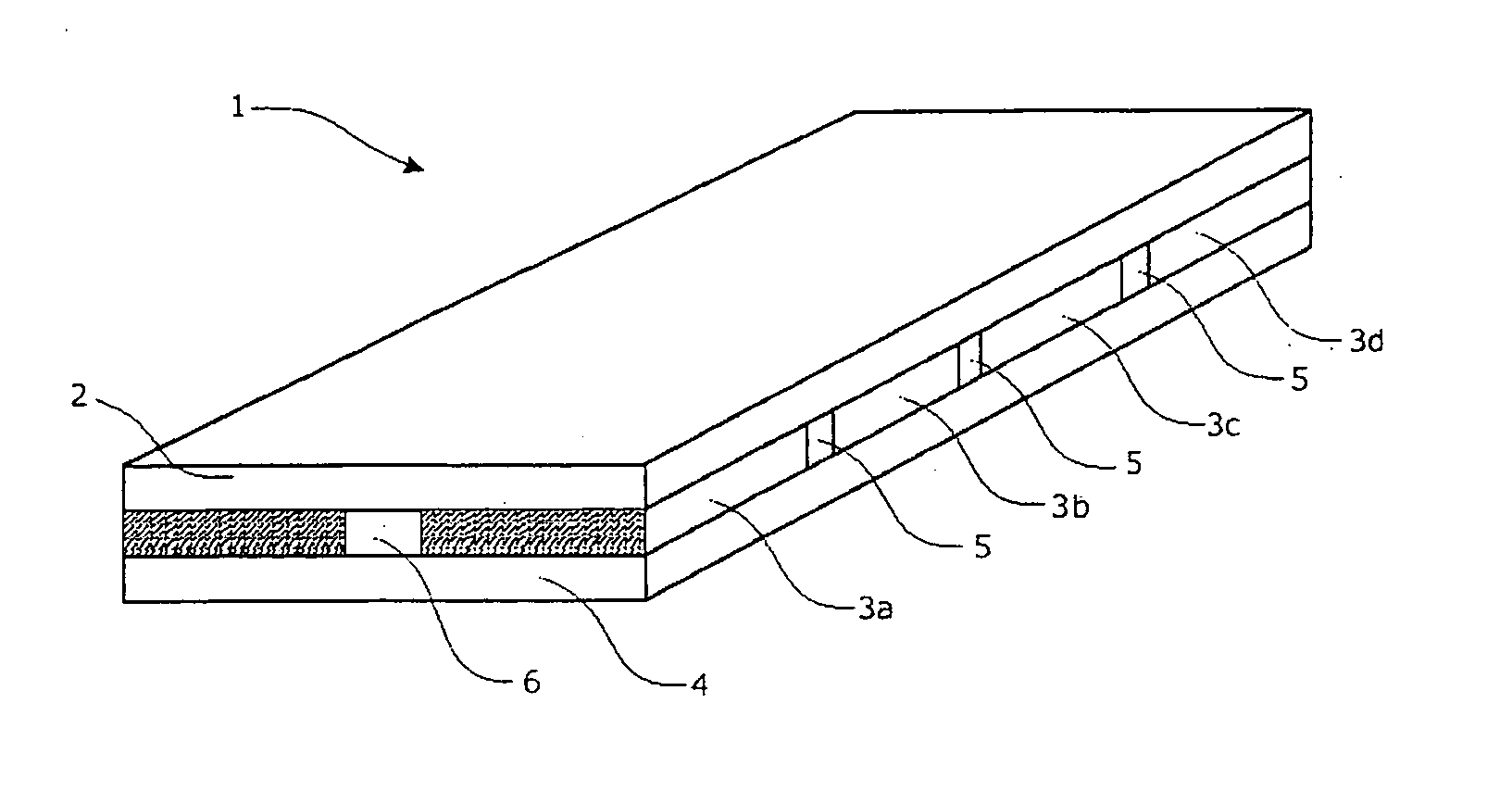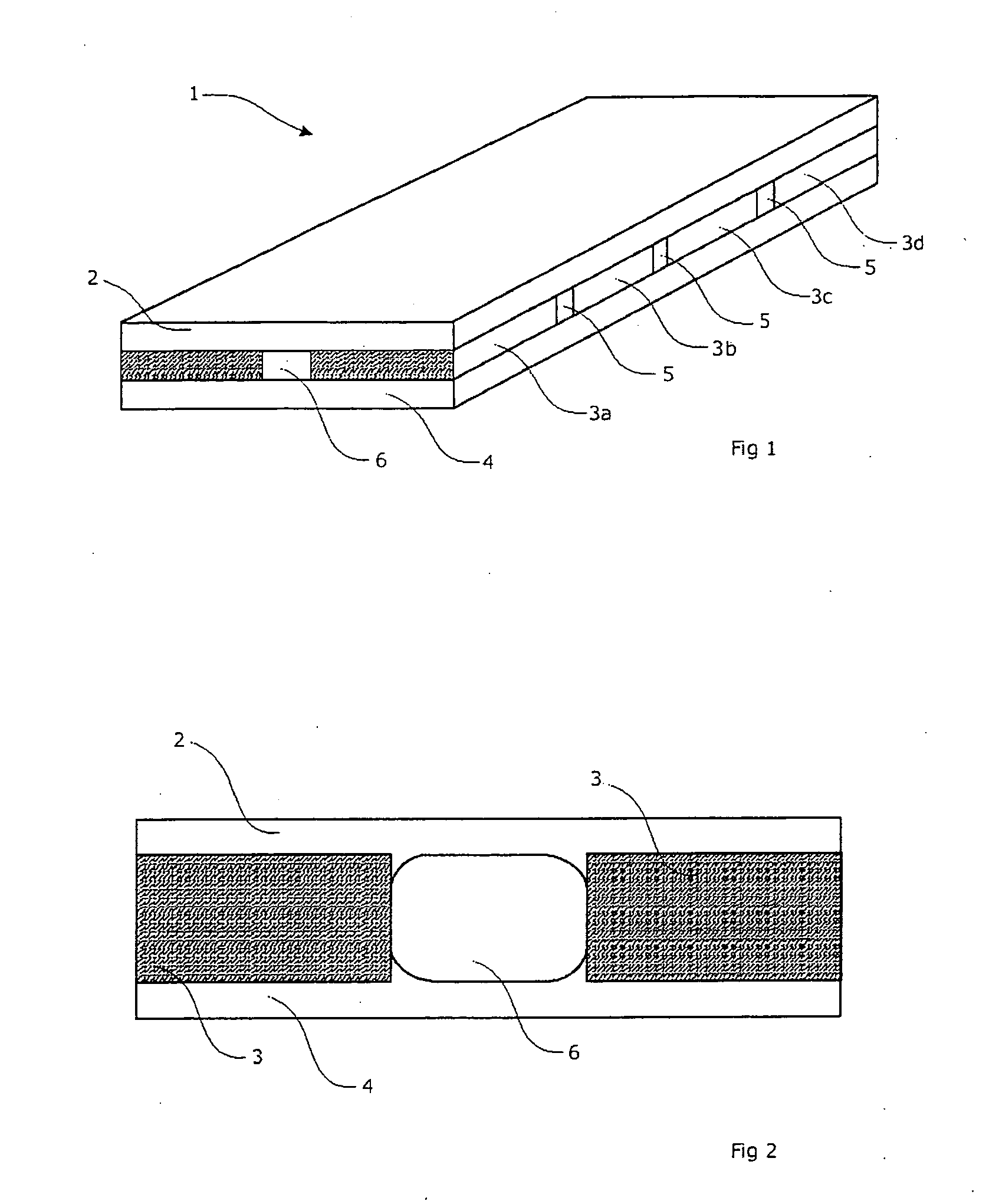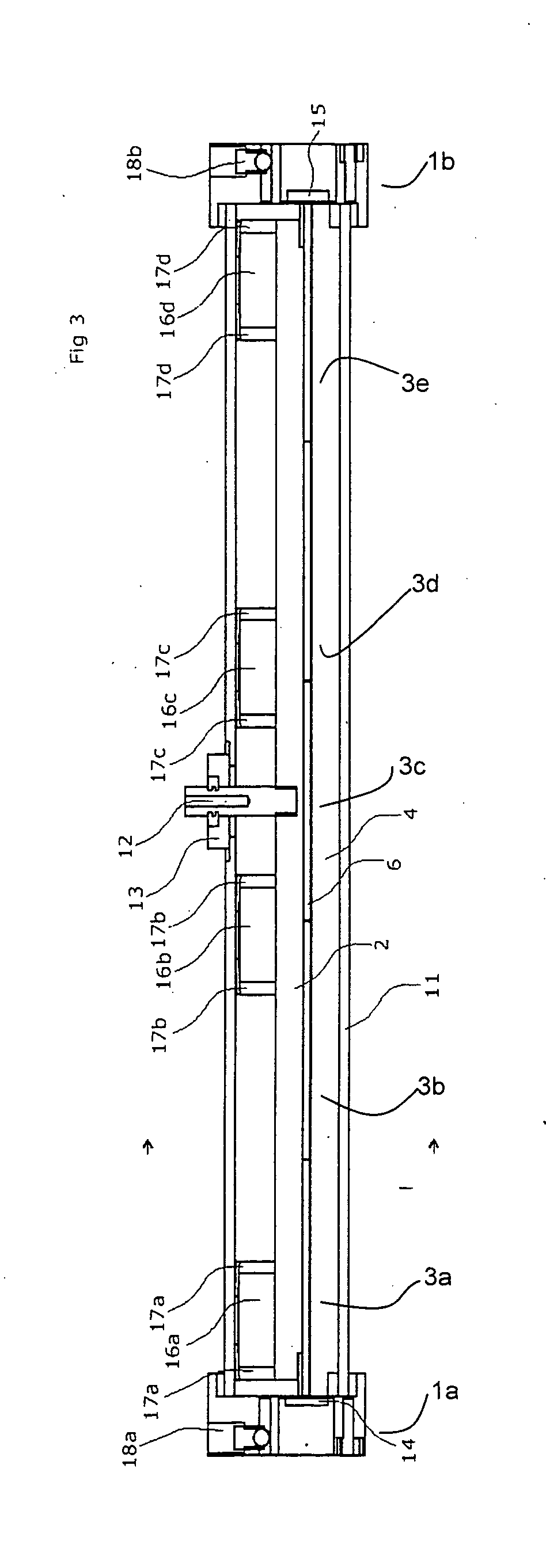Laser system
a laser system and laser technology, applied in the field of lasers, can solve the problems of inability to accurately align, difficult to cost-effectively fabricate, and difficult to discharge lasers with sufficient accuracy, and achieve the effects of increasing laser power and/or efficiency, accurate alignment, and low degradation
- Summary
- Abstract
- Description
- Claims
- Application Information
AI Technical Summary
Benefits of technology
Problems solved by technology
Method used
Image
Examples
example 1
[0126] Eo=8.89 pF / m, Ere=1 for CO2 gas mix, Le=36″(914.4 mm), We=4.5″(114.3 mm), de=1.75 mm [0127] Ce=531 pF [0128] The capacitance between pad and it's electrode Cp is:
Cp=EoErpLpWp / dp (2)
example 2
[0129] Erp=9 for alumina ceramic, Lp=2.210″(56.1 mm), Wp=1.712″(43.5 mm), dp=0.030″(0.75 mm), [0130] Cp=260 pF [0131] The capacitance between a pad and the pad opposing it (“inter-pad”) across the electrode gap on the opposite electrode Cpp is:
Cpp=EoEreLpWp / de (3)
example 3
[0132] Cpp=12.4 pF [0133] With a strap inductance L in parallel with each pad capacitance the reactance at rf frequency f between pad and it's electrode is:
Xp=1 / wCp, no strap inductance (4a)
Xp=wL / (1−w2LCp), where w=2 pi f (4b)
PUM
 Login to View More
Login to View More Abstract
Description
Claims
Application Information
 Login to View More
Login to View More - R&D
- Intellectual Property
- Life Sciences
- Materials
- Tech Scout
- Unparalleled Data Quality
- Higher Quality Content
- 60% Fewer Hallucinations
Browse by: Latest US Patents, China's latest patents, Technical Efficacy Thesaurus, Application Domain, Technology Topic, Popular Technical Reports.
© 2025 PatSnap. All rights reserved.Legal|Privacy policy|Modern Slavery Act Transparency Statement|Sitemap|About US| Contact US: help@patsnap.com



